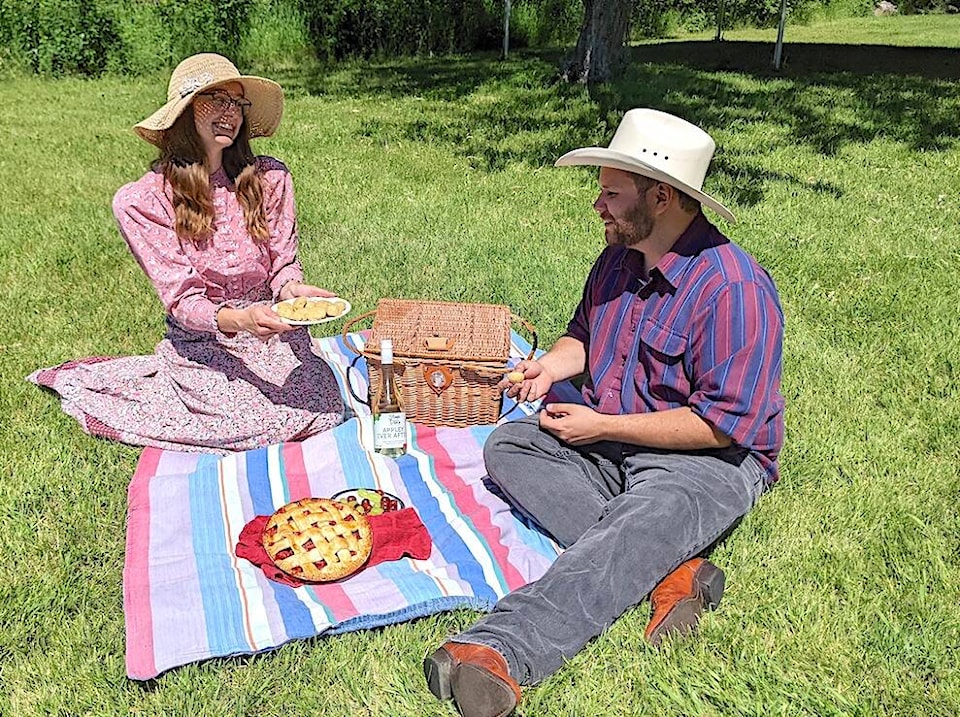The three founding cultures of Red Deer will be celebrated this weekend at Fort Normandeau Days.
In recognition of the First Nations, Metis and European settlers that began mixing in this area about 150 years ago, there will be cannon and firearms demonstrations at the re-created fort west of Red Deer.
There will also be axe-throwing, pioneer games and crafts, face painting — and old-fashioned, homemade ice cream available on Saturday and Sunday, Aug, 27 and 28, from noon to 5 p.m.
On Saturday at 2 p.m. Jaydin Vonkeman Music will perform on stage. On Sunday at 2 p.m., Daniel Allard will do a Metis dance performance.
Visitors will glimpse the way life was for First Nations and Métis people, as well as the first settlers who arrived in this area from Europe and other places, said Alice Koning, community outreach co-ordinator of the Waskasoo Environmental Education Society.
Historically, the hamlet of Red Deer (later a growing town and then city) sprang from its convenient, central location. Metis, indigenous people and settlers came together on these banks of the Red Deer River more than 150 years ago, bringing their different languages, cultures and traditions to the table.
In 1884, Robert McClennan built a stopping house at the halfway point between Edmonton and Calgary, where the river crossing was safest, for travellers who might need a hotel/restaurant/watering hole.
“This land was used for many generations by the First Nations and Métis people. It was the First Nations who taught the European settlers where it was easiest to cross the Red Deer River,” said Koning.
As it would take a week or more to make that 300 km journey by carts drawn by horses or oxen, so “they would appreciate stopping to refuel or to fix their carts, if they were broken,” added Koning.
Just a year later, the military took the site over as a precaution after some area settlers became alarmed that east of here, in Saskatchewan, some Metis people, led by Louis Riel, with assistance from First Nations tribes, had rebelled against the Canadian government.
Under command of the 65th Mount Royal Rifles, the stopping house was transformed into Fort Normandeau and fortified with a high wooden fence.
No shots were ever fired at the fort, noted Koning, and it was eventually dismantled.
But the site was rebuilt a century later, in 1986, on nearby land (the original fort was located on what’s now private land), as a reminder of Red Deer’s origins — and to commemorate the First Nations, Metis, and Europeans who influenced the development of central Alberta.
Koning said this is the first Fort Normandeau Days celebration since 2019, so she isn’t sure how many people to expect.
Visitors, numbering two hundred over the weekend in the past, can still see historic graffiti that was carved by soldiers into original logs from the first fort. These beams were salvaged and incorporated into the reconstructed fort’s interpretive centre.
Koning said there will not be a re-imagined battle staged at this year’s event, but historic cannons and firearms will be discharged. Some snacks can be purchased on site, and visitors are welcome to bring their own picnic lunches. Small ice cream cones will be provided for free with purchased admissions, she added.
The entry fee is $5 per person or $20 for a carload — cash only at the gates. The fort is located at 28054 B Township Road 382, on the west side of Highway 2.
lmichelin@reddeeradvocate.com
Like us on Facebook and follow us on Twitter
